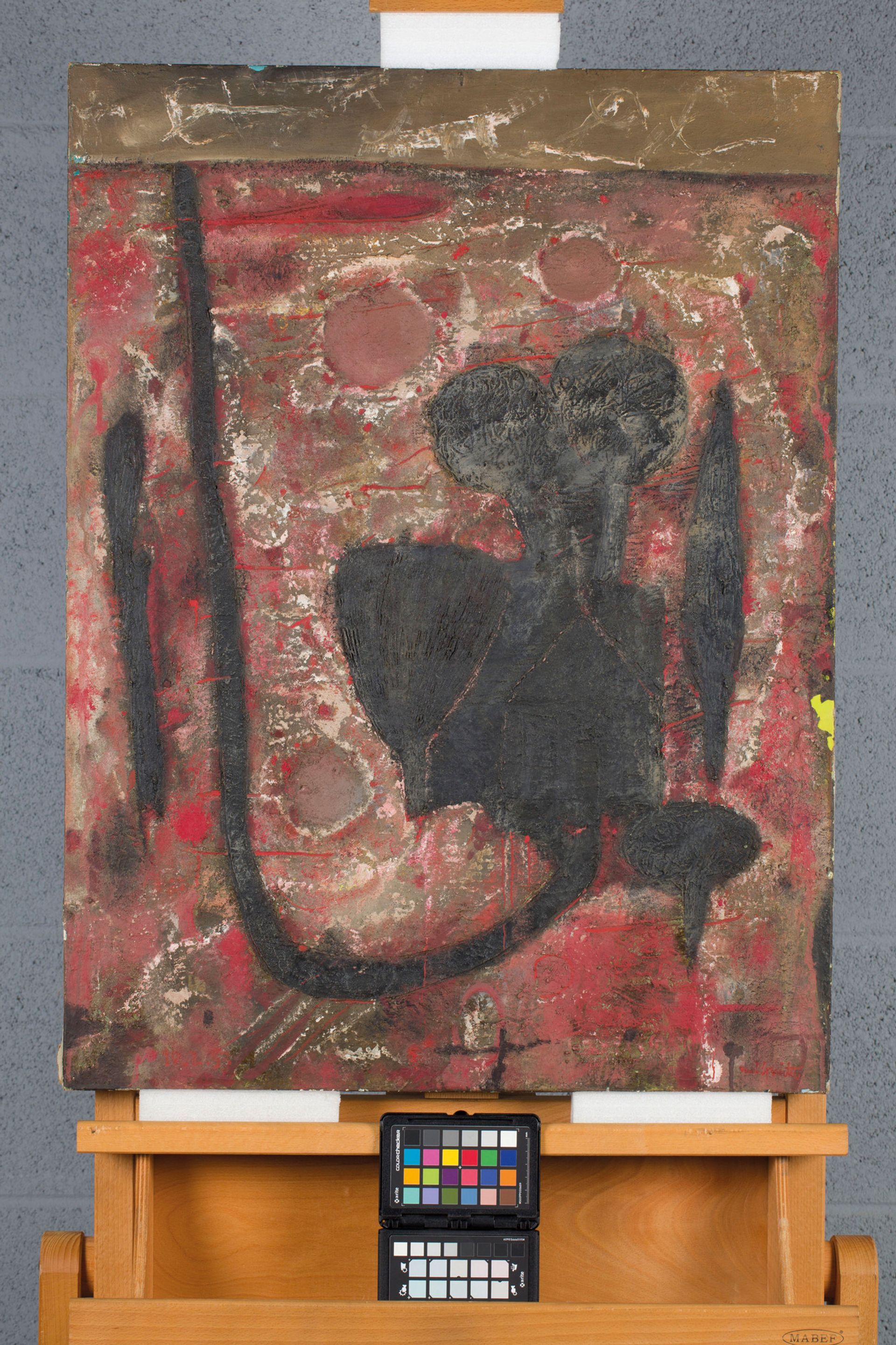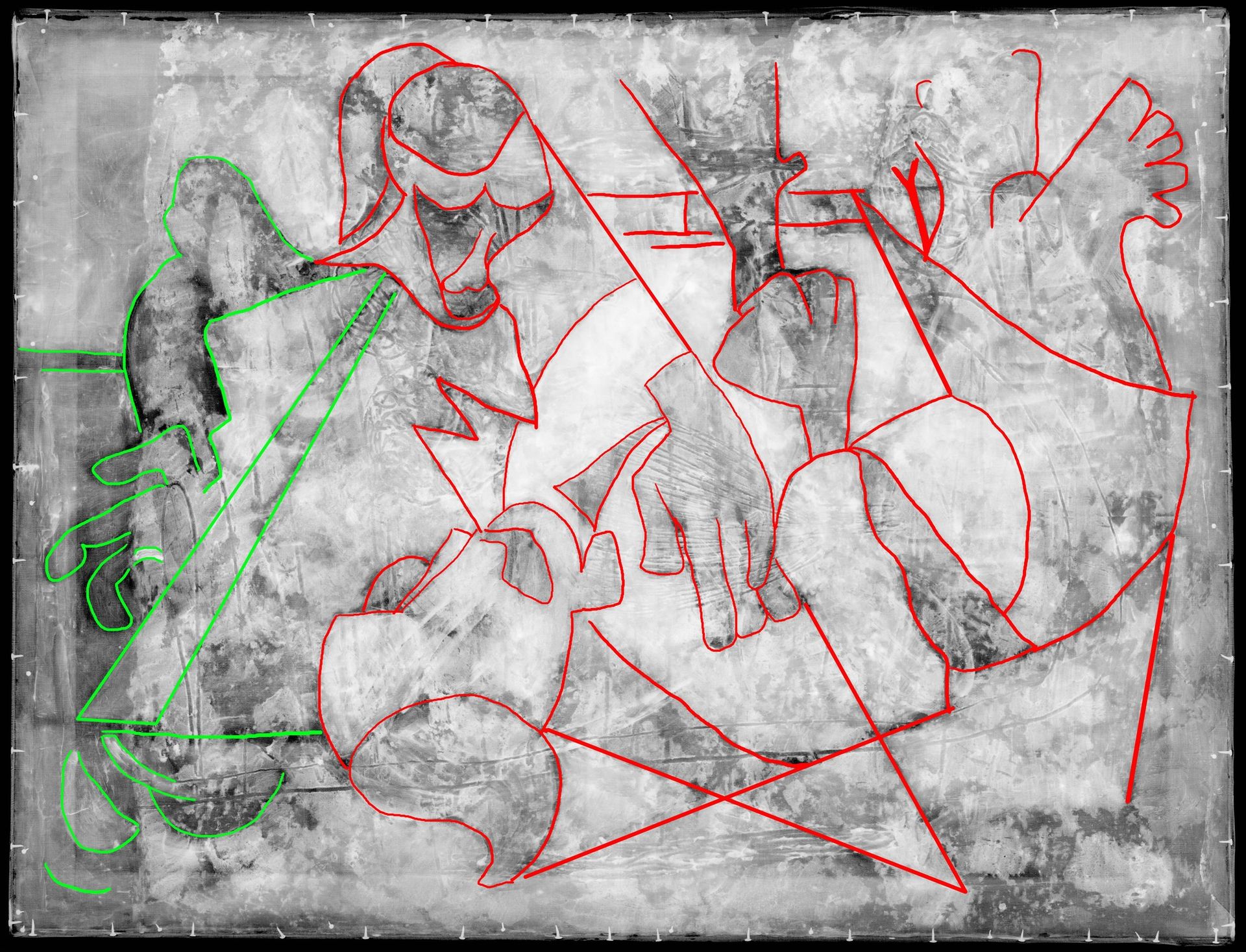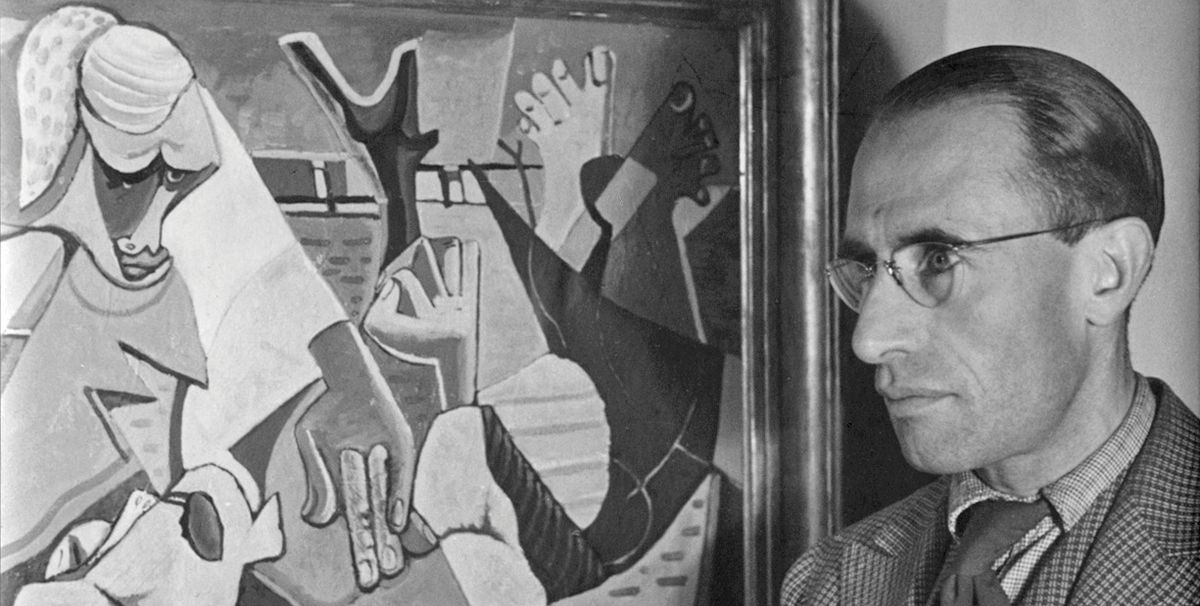A “lost” Cubist painting has been found under an Art Brut work by the same artist. The discovery was made when Manuela de Kerchove d’Ousselghem, the granddaughter of the Belgian artist and art critic René Guiette (1893-1976), took her grandfather’s painting Paysage (1953) to be investigated by the Swiss firm SGS Art Services after noticing patches of blue and bright yellow paint inconsistent with the brown, red and black canvas on the edges of the picture where paint had been lost.

X-ray radiography revealed the presence of another composition that De Kerchove d’Ousselghem knew of from a photograph and had been looking for. The hidden composition, a landscape rather than a portrait shape like Paysage, dates to around 1941 when Guiette was interested in Cubism. By the time he created Paysage more than decade later he had moved on to Art Brut. He was known to reuse canvases when his painting style evolved or when supplies were limited, such as during the Second World War.

Current technology does not allow for the two compositions to be separated and, even if it did it, one could argue that it would not be ethical to do so as Guiette chose to paint over his original composition. “We are convinced that, for ethical reasons, the will of the artist must be respected. Especially when science allows us to have the best of both worlds,” says a spokesman for SGS, explaining that science allows us to uncover lost works and the artists’ creative processes. It also helps to authenticate a work, he says, adding that SGS once discovered a 1940s tractor depicted on an underlying composition of a painting that was dated several decades earlier.
De Kerchove d’Ousselghem, who owns the picture, wants the underlying composition to remain visible so she will not have the painting restored. She is currently looking for more works from her grandfather’s Cubist period and if she does not find them she will assume he painted over them.


